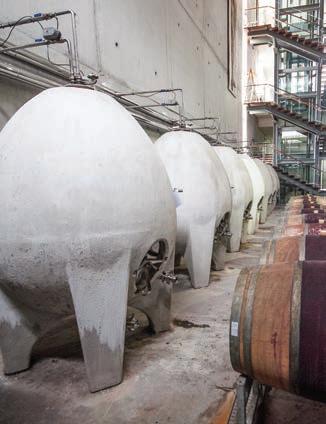
4 minute read
Concrete wine tanks are winners
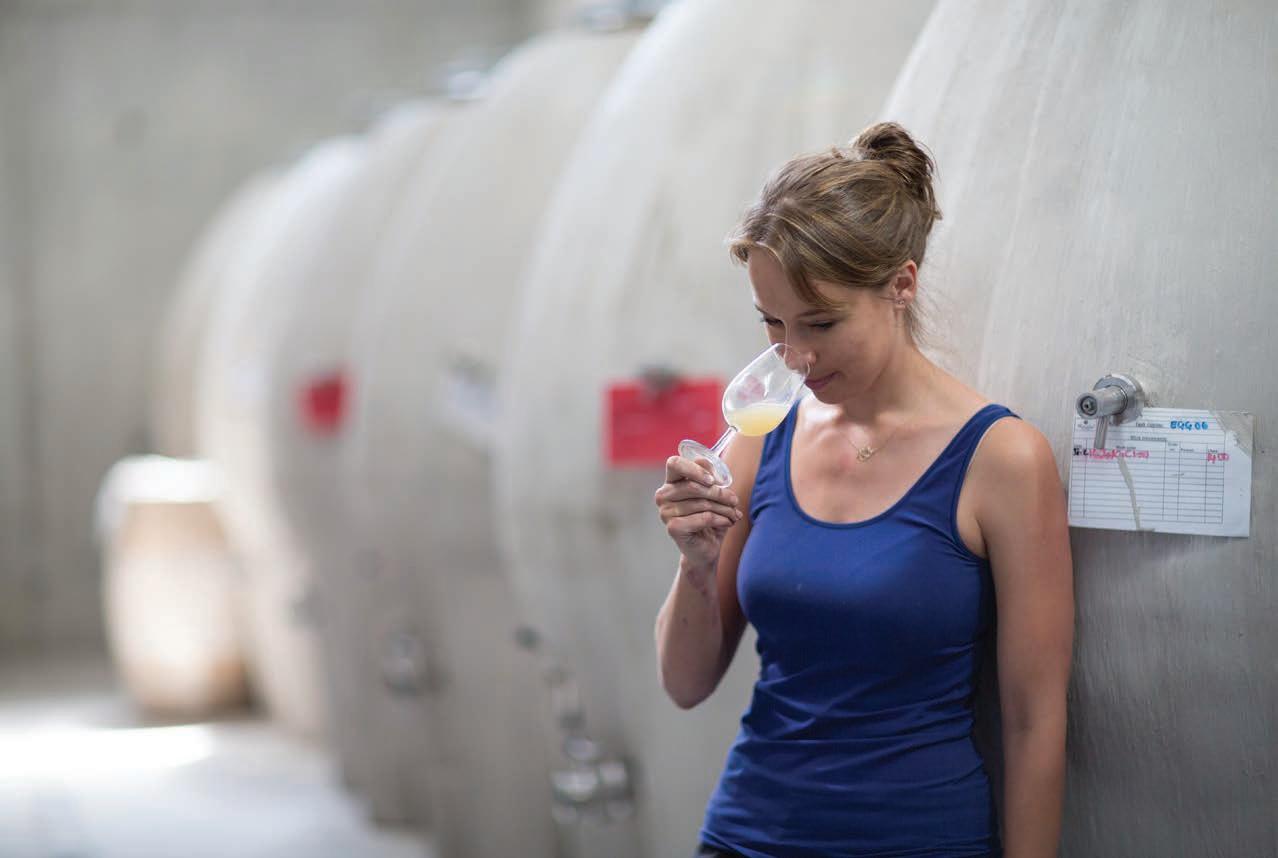
Wine producers are turning to precast concrete tanks for fermentation and maturation. There are several reasons for what is becoming a global trend, but the overriding factor is the production of wines which are more integrated and complex.
They are also softer, fuller-bodied and have more mouth feel – some of the other reasons several South African wine estates are riding this wave.
Marketed by Ikapa Concrete and produced by Cape Concrete, locally produced precast concrete wine tanks have been available for the past five years. Ikapa has supplied concrete tanks to over 40 local estates, the first delivery having been to the Alheit Vineyards in February 2015.
Cape Concrete makes the full range of concrete tanks for Ikapa. It includes the egg-shaped (Eon) 1 520-litre unit and rectangular tanks in four sizes: 2 550 litres, 6 000 litres, 8 000 litres and 10 000 litres. During the first quarter of 2021, Cape
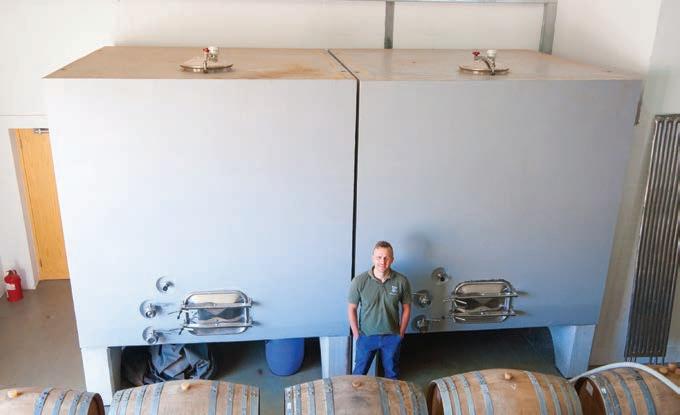
(Top): Waterkloof Estate wine-maker Nadia Barnard.
(Above left): Some of Waterkloof Wine Estate’s egg-shaped wine tanks.
(Left): Noble Hill proprietor and wine-maker Kristopher Tillery and his 10 000-litre concrete tank duo.
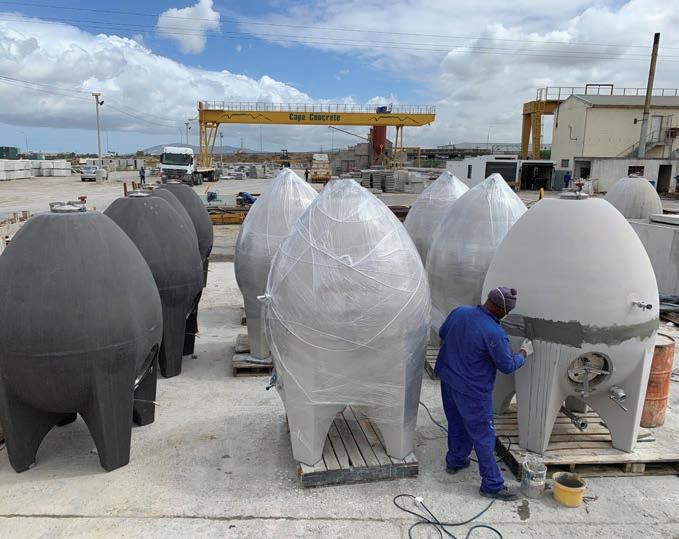
Concrete produced 14 Eon tanks and two Kian 10 000-litre tanks.
Cape Concrete factory manager Johan Nel says precast concrete wine tank production requires a complex concrete mix design.
“One can’t use additives or chemicals, just raw concrete, and getting the slump and workability right without the use of polymer additives or any bleeding is quite tricky. We use a granite-stone aggregate, washed dune sand and chlorine-free water. The water is sourced from an underground reservoir at our factory and is purified through reverse osmosis,” he explains.
Ikapa managing director Dougie Atterbury says there is a growing demand for locally produced concrete wine tanks.
“The micro-porosity of concrete allows microscopic amounts of oxygen into the wine, resulting in the same type of gentle oxygenation found in barrel fermentation. But concrete allows for a better expression of the fruit, as the wines don’t suffer from reduction.
“Moreover, oak barrels are becoming very expensive and normally last only three to four years, whereas concrete tanks can last up to 40 years and longer. When we began producing tanks locally, we imported all the stainless steel components attached to them from Europe, but now we’re sourcing most of them locally,” he says.
Commenting on the egg-shaped tanks, Atterbury explains that they assist with the oxygenation process.
“The thermodynamics of the egg shape aids fluid movement and reduces pressure on the lees. It also aids the deposition of lees across a larger floor area than in barrel maturation and no stirring is required.”
One of the users of the Ikapa eggshaped tank is Waterkloof Wine Estate in Somerset West. Wine-maker Nadia Barnard says the egg-shaped tanks are ideal for holding lees in suspension and, very importantly, fine lees. “This adds length and complexity and helps create elegant wines,” she adds.
Waterkloof installed 15 egg-shaped tanks in 2017 and uses them for the fermentation and maturation of Sauvignon and Chenin blends, as well as Chardonnay, Pinot Noir and some other varietals.
Producing up to 500 tons a year in 30 varietals, Waterkloof’s vines are grown using bio-dynamic farming techniques. It is one of a handful of South African wine estates doing so. Based on holistic farming methods, as espoused by Austrian philosopher Rudolf Steiner, the estate exports 90% of its output, mainly to the UK and European destinations, but also to Africa, the Middle East and. more recently, the USA.
Another Ikapa tank-user is organic boutique wine estate Noble Hill in Simonsberg-Paarl, which installed two 10 000-litre tanks in 2019, one for white and the other for red wine production.
“We use the tanks for fermentation and maturation. We chose them because concrete gave us oxygenation and maturation without any oak overlay,” explains proprietor and wine-maker Kristopher Tillery.
“We’re using the white tank for maturing our Chenin Blanc. The first wine produced in this tank has a good palate weight and it’s retained its freshness and liveliness very nicely. There’s very little lees settlement and the wine remains fairly turbid during the maturation period. This means we get good contact throughout the maturation period, but we do remove it for settling.”
Atterbury says another advantage of concrete is that it is neutral, so it imparts no flavours of its own. “What’s more, it’s easy to clean and will consistently deliver the same flavours year after year,” he adds.
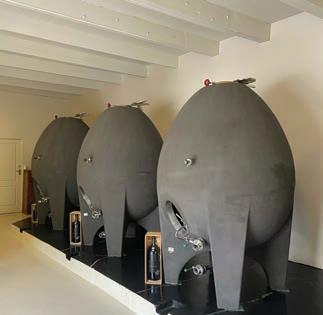
(Top): New egg-shaped concrete wine tanks are readied for delivery at Cape Concrete.
(Above): Newly installed tanks at Mimosa Wines, Montagu.










